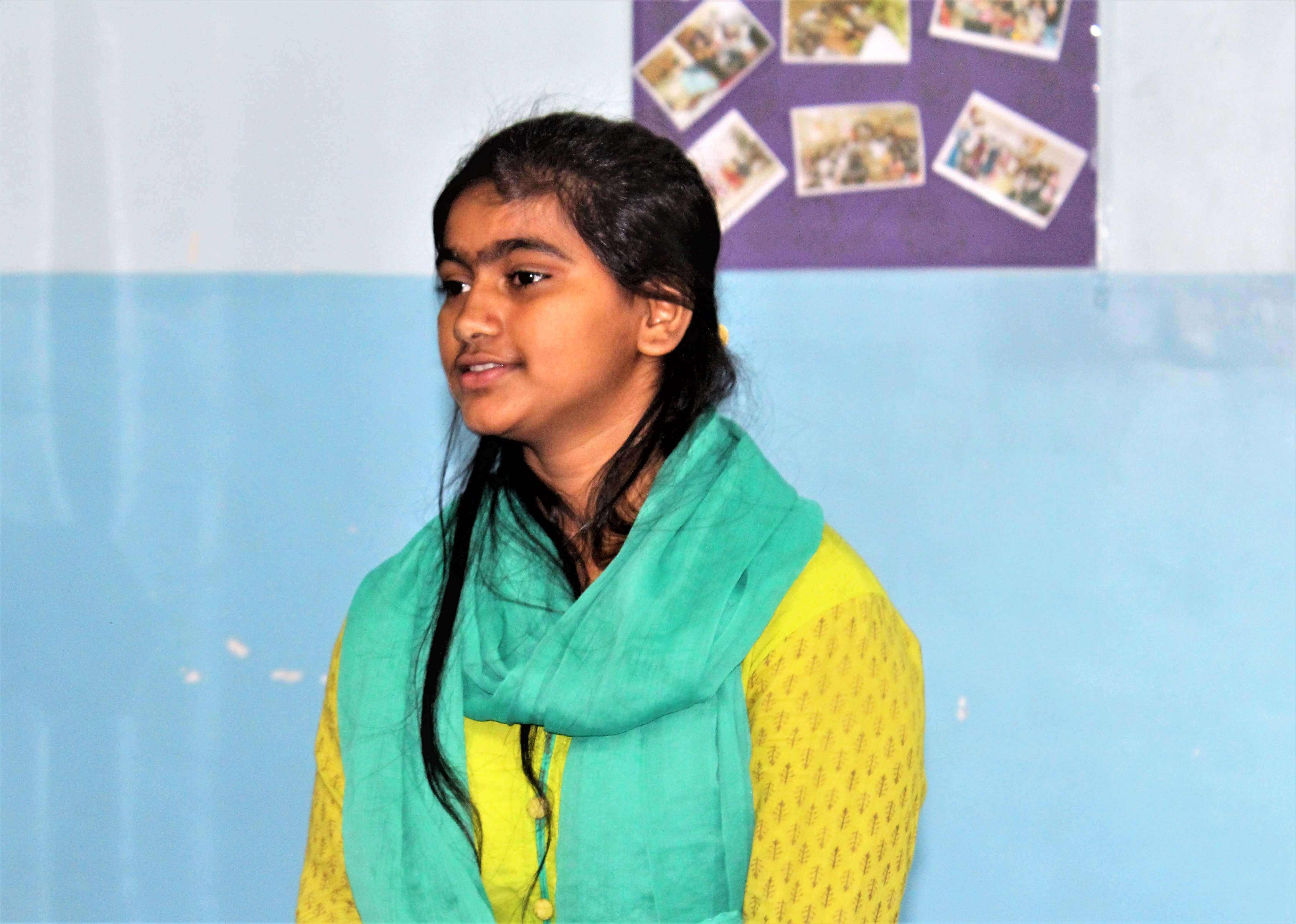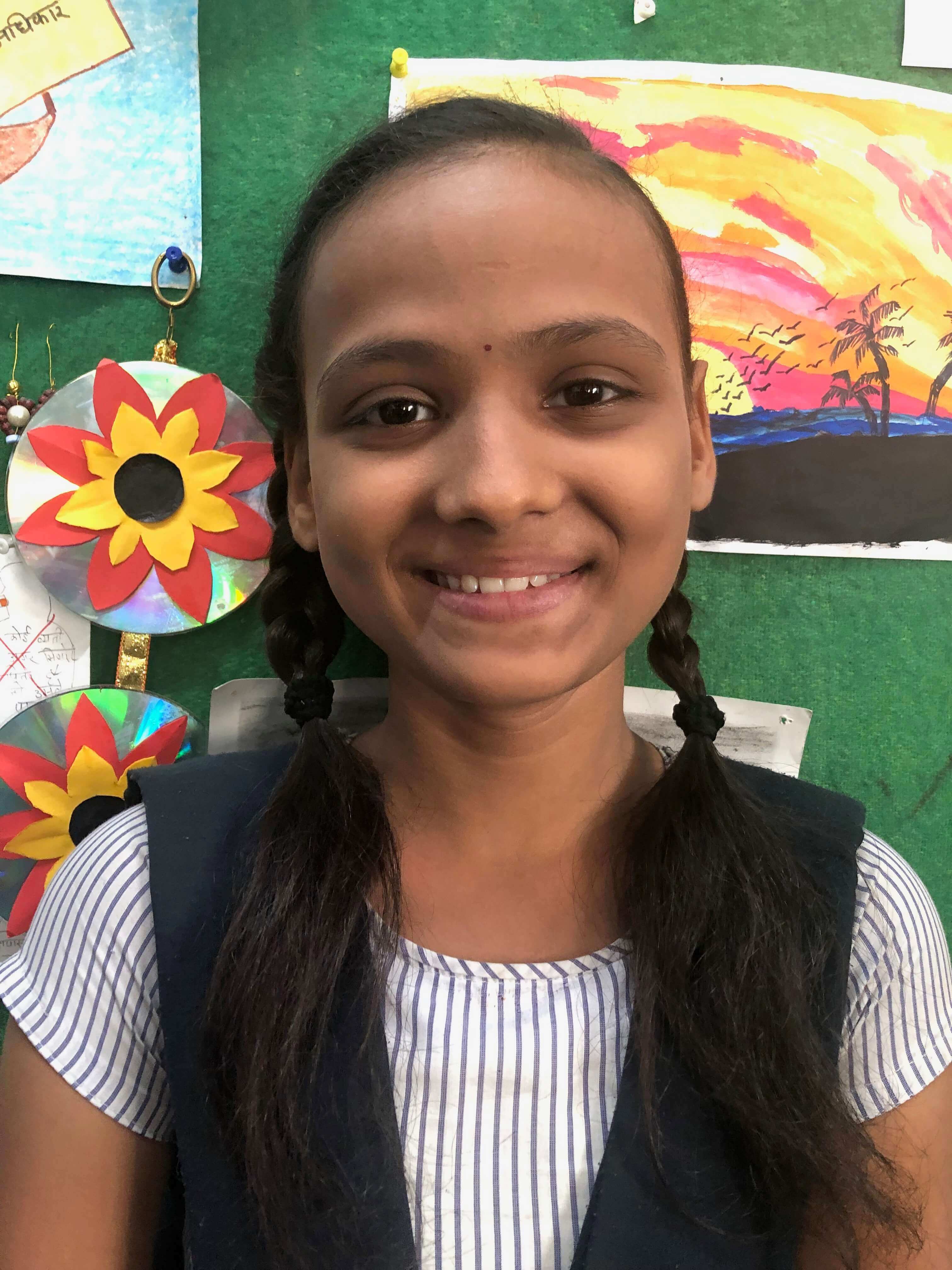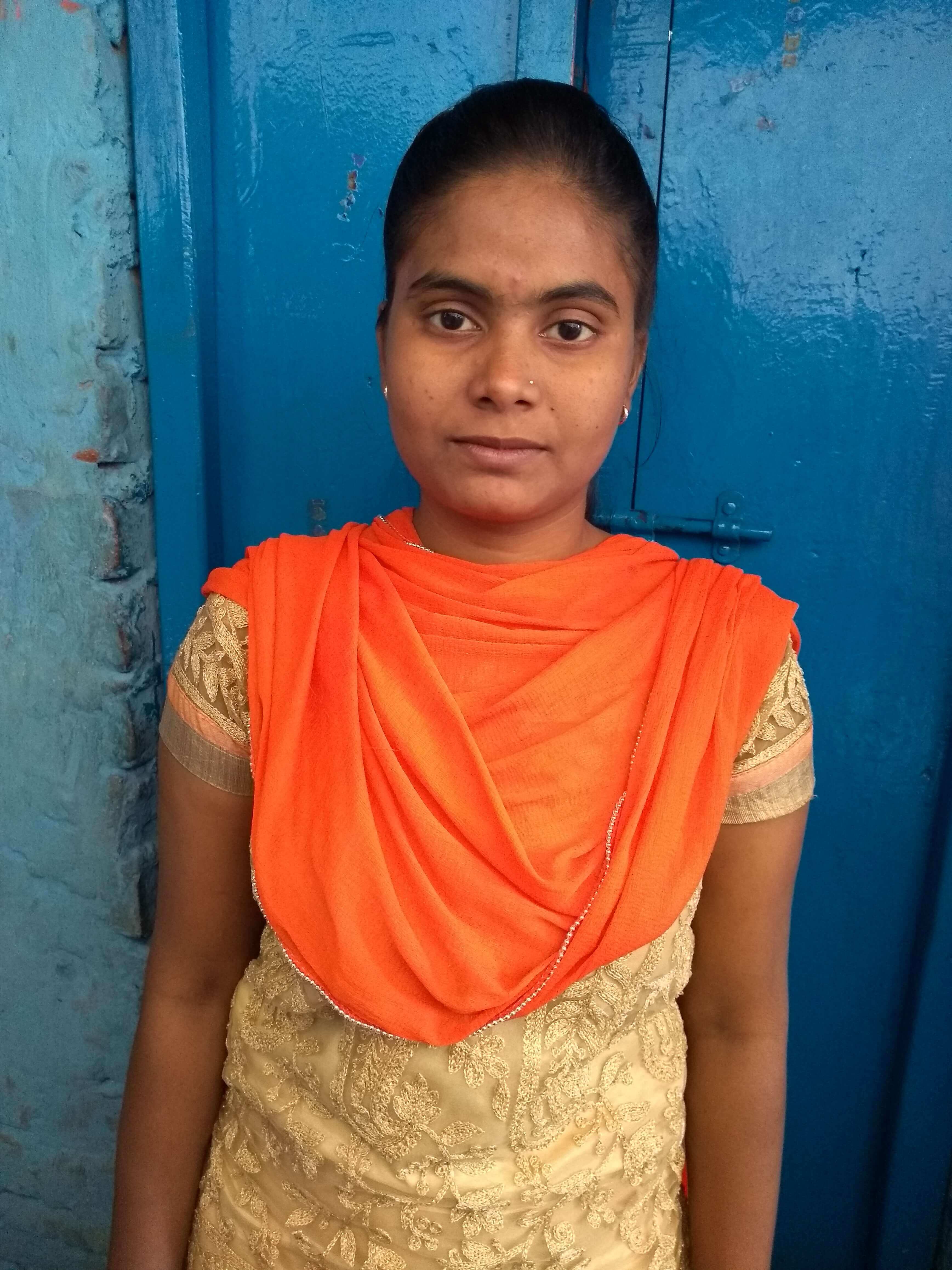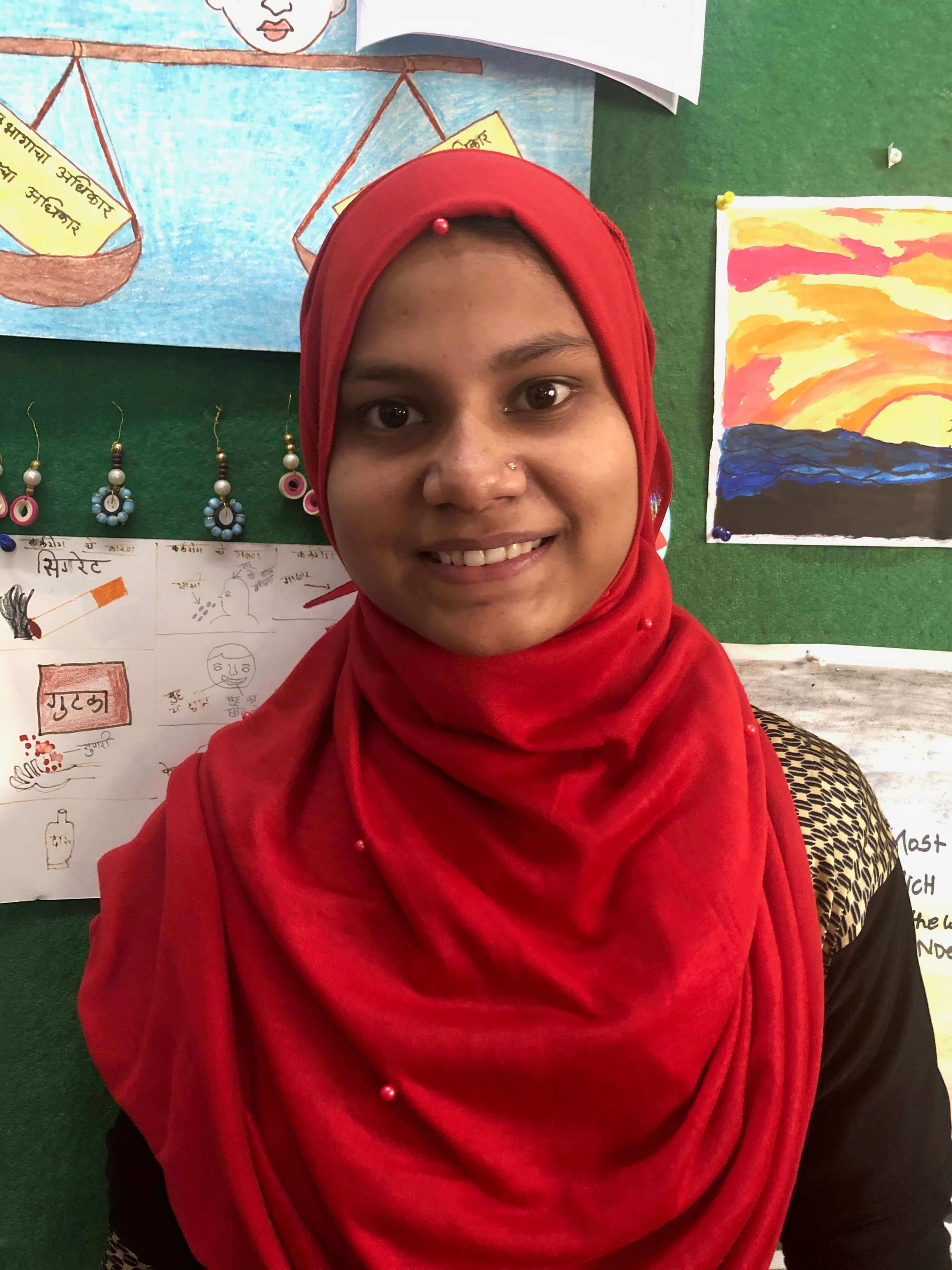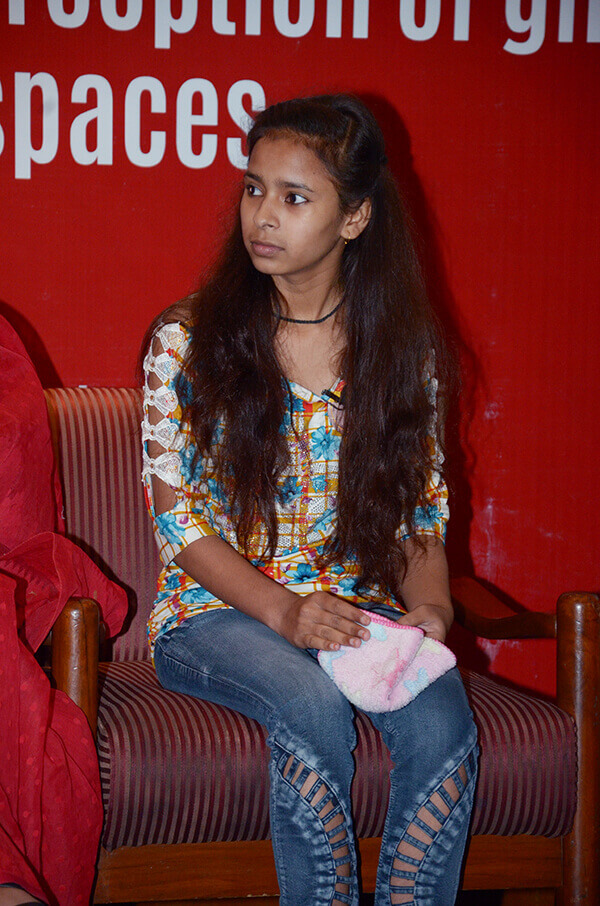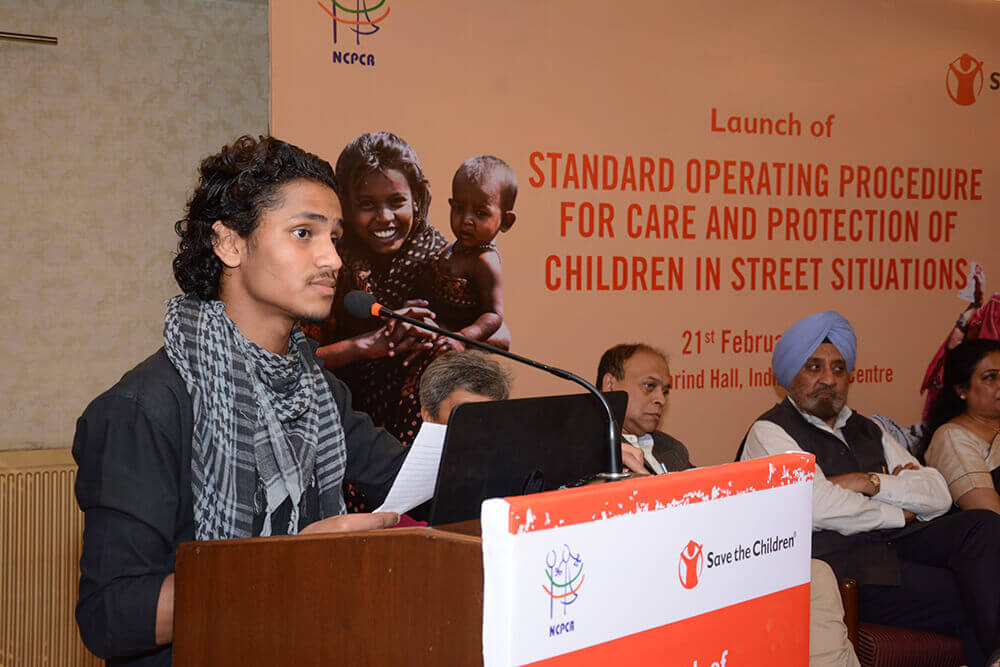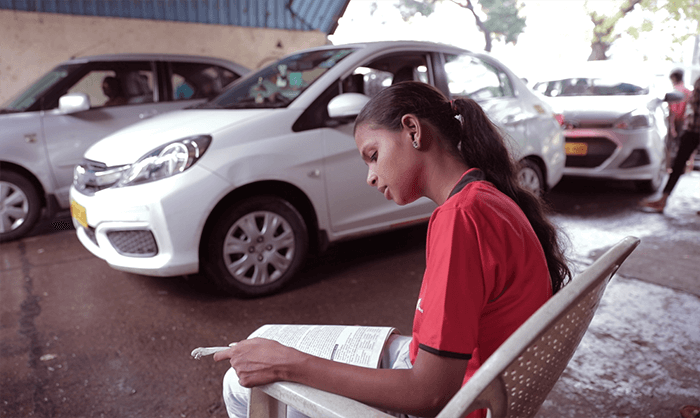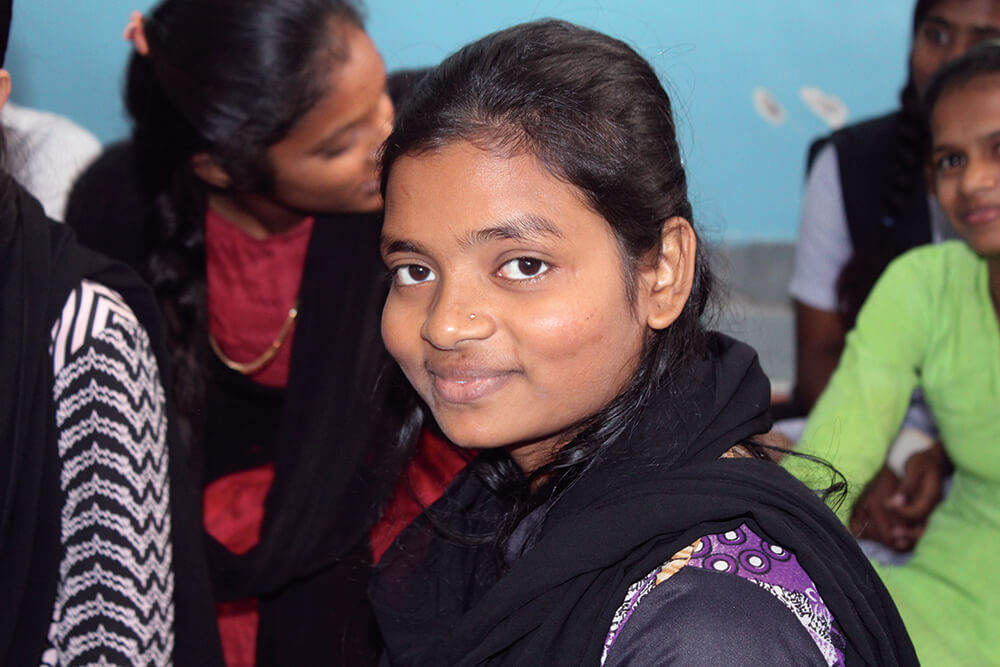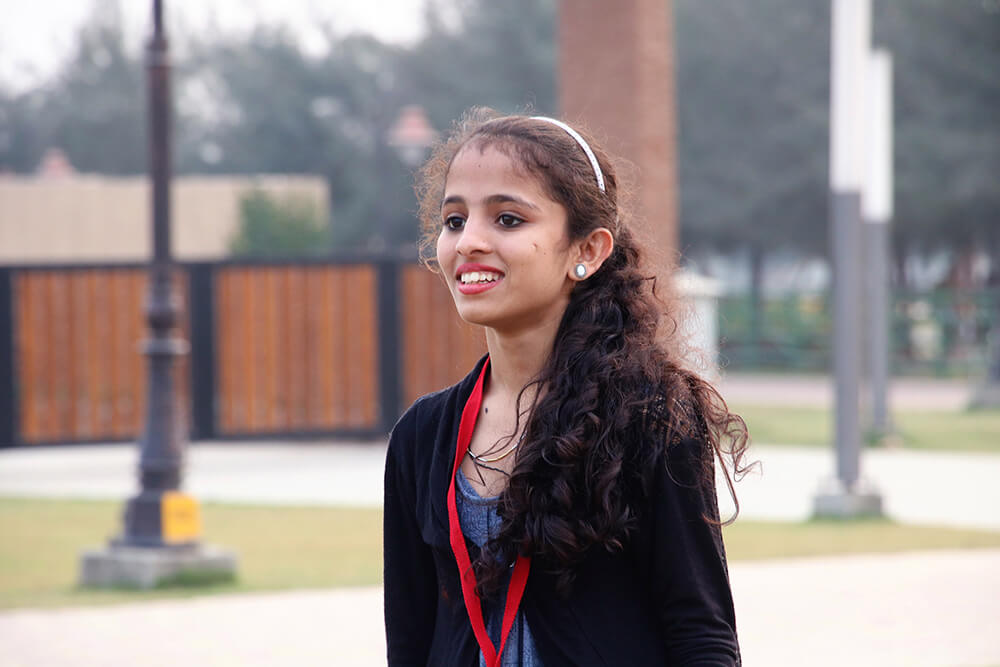
The Invisibles
You know who they are… the little boy with the runny nose knocking at your car window, the girl with the braided hair selling books at the traffic signal and the boy at the cusp of teenagehood working at the neighbourhood eatery. Sometimes, you offer them food, sometimes money and very often you turn the other way. You see them everyday, and yet they are #TheInvisibles.
Invisible in our census and policy, invisible as citizens of our country, invisible as rights holders, invisible in schools and playgrounds, invisible in public discourse and decisions, invisible in our minds and conscience.
These children are often described as ‘hidden’ or ‘invisible’ in lack of identity, recognition or social status that can make them count. Commonly referred to as ‘street’ children, more than 20 lakh children live on India’s streets, with bleak chances of survival, learning and thriving – with little access to education, clean water, sanitation, housing and nutrition. Nearly 80% of them do not even have a name they can call their own, making them the most vulnerable section of society.
A recent study by Save the Children – Life on the Street, opened a can of worms. The findings illustrated that the most looming problem faced by children living on the streets was having no legal identity documents, nor access to rights and entitlements. At a time when Aadhar cards were sealing every Indians identity, having no identity would prove to be a bigger barrier for its street children.
Save the Children set out on an important journey – to make #TheInvisibles, visible. In collaboration with government, civil bodies and the public, #TheInvisibles is committed to campaign for and with the 20 lakh children living on the streets of India.
This week, we share with you success stories of children living on the street, who are testament to the ambition of this campaign.
#TheInvisibles is an initiative by Save the Children to provide identify and claim rights for children living in street situations, committed to making them visible citizens of society.
Zannat
“In life I must not limit my challenges, I must challenge my limits to make my vision into a reality.” says Zannat Ansari, a 12 year old girl living close to Maratha Mandir in Mumbai. Zannat’s father left home when she was just 10 years old, and she now lives with her mother who works as a domestic worker in the neighbourhood.
From younger days, Zannat has learnt to live alone at home, despire her grandparents living in the same community. Due to mounting family issues and financial constraints, she was left with no choice but to drop out of school and start helping her mother, a dream forsaken for her.
Save the children in partnership with Hamara Foundation, met Zannat who expressed her wish to study. She was admitted to night school, where she thrived. She was also trained by the organization on journalism, and become a child reporter.
Eventually, Zannat started writing stories of children on the streets and got her work published in quarterly newsletters. She was trained on child rights and other subjects, to build her knowledge and make her a more proficient writer.
Making #TheInvisibles visible is an initiative by Save the Children to provide identify and claim rights for children living in street situations, committed to make them visible citizens of society.
Children in street situations are defined as per the Standard Operating Procedure for Care and Protection of Children in Street Situations. An SOP by NCPCR and MWCD in collaboration with Save the Children. Children in Street Situations are categorised as: Abandoned or Orphan Child, Missing or Runaway Child, Street ‘Connected’ Child / Community Child on the Street, Child begging on the street.
Sonali
Studying in Grade 9 at Tardeo Municipal School, 14 year old Sonali Satkar has lived her life in on the neighbourhood footpath. Her father works as a Coolie and her mother works as a domestic worker, to make ends meet.
Due to her parents being away at work all day, Sonali was put in charge of looking after her 3 younger siblings and managing household chores. As a result, she was irregular at school and wasn’t receving an education.
With intervention from Save the Children in collaboration with Hamara Foundation, Sonali was reintegrated into school. Her association with the NGO’s put her in touch with a host of cultural, educational and sports activities that futher encouraged her to want to pursue her education. Sonali is good at a host of things – From football to dancing, she has participated at all possible events and shown great enthusiasm.
Today, she has been acquainted with the rights of children, and talks about it in her community, equipping people to address and act on violations against children. Sonali dreams of becoming a teacher some day.
Making #TheInvisibles visible is an initiative by Save the Children to provide identify and claim rights for children living in street situations, committed to make them visible citizens of society.
Children in street situations are defined as per the Standard Operating Procedure for Care and Protection of Children in Street Situations. An SOP by NCPCR and MWCD in collaboration with Save the Children. Children in Street Situations are categorised as: Abandoned or Orphan Child, Missing or Runaway Child, Street ‘Connected’ Child / Community Child on the Street, Child begging on the street.
Jyoti
This young girl aspires to make a change in the lives of people, by becoming an educator. Like Malala, she believes that “One child, one teacher, one pen and one book can change the world. Education is the only solution.” Jyoti’s indomitable spirit pushes her to pursue her dream, by taking small steps, towards change in her society.
16 year old Jyoti lives in a very small room in Kolkata with her parents, 4 sisters and 1 brother. Her father works as a carpenter and her mother is a house wife. One of her elder sisters is married and the other siblings are studying in a local school.
This young girl, multitasks to ensure she managed to study and to help out with household chores. Not only does she only offer a hand in the house work, but also supports herself financially by conducting tuition classes at her home.
Jyoti’s home is marred by a host of health hazards. Besides having to share toilets with the numerous neighbours in the society, the toilets been unclean, poorly managed add greatly to her susceptibility towards many illnesses. The neighbourhood also lacks access to clean and safe drinking water, an additional threat to her well-being.
But, Despite these hurdles, Jyoti remains spirited and motivated to keep going and building a better future for herself. She is an active learner in sessions conducted by Save the Children and Hamara Foundation, on disaster preparedness under the Urban DRR initiative. She has also actively contributed to developing the community disaster management plan along with her peers and community members.
Jyoti regularly attends and conducts Children’ Group meetings, CRPC and Task Force meetings. She has gathered a lot of knowledge about Disaster preparedness, health, nutrition, Child rights and entitlements for children.
This self-driven girl is adamant on creating good practices for her community to keep it clean, healthy and safe from preventable risks.
Jyoti is respected by many in her community, for acting as a shining star and giving hope to many people around her, and working tirelessly to overcome dire challenges and change the world.
Making #TheInvisibles visible is an initiative by Save the Children to provide identify and claim rights for children living in street situations, committed to make them visible citizens of society.
Children in street situations are defined as per the Standard Operating Procedure for Care and Protection of Children in Street Situations. An SOP by NCPCR and MWCD in collaboration with Save the Children. Children in Street Situations are categorised as: Abandoned or Orphan Child, Missing or Runaway Child, Street ‘Connected’ Child / Community Child on the Street, Child begging on the street.
Farzana
For the past 17 years Farzana has been living on the street at Maratha Mandir in Mumbai. She lives at this Zhopad Patti with her parents and 4 siblings (2 brothers and 2 sisters) who migrated from rural Bihar to make a living in the big city. Today, her father is a driver and her mother is a domestic worker who works at 5 households to make ends meet. On an average, her mother earns between INR 3000 to INR 4000 per month.
Every six months, Farzana’s home is demolished by the local municipality, often without prior notice. Due to this, her family lost their belongings several times. Without any alternative, they rebuild a temporary home again and start living there.
The youngest of 5 siblings, Farzana was fortunate enough to encounter Hamara Foundation, a organization working dedicatedly for street children. From there on, her life changed dramatically, and she began working for children like herself. Farzana has also opened up and explored her love for sport, especially kho-kho. She has played on behalf of her school and won various medals and trophies for the same. Despite her difficult circumstances, she remains unstoppable on the field.
Today, with help from Save the children in partnership with Hamara Foundation, Farzana excels on the field. She has also secured an Aadhar card, that finally helps her get access to publi services.
Making #TheInvisibles visible is an initiative by Save the Children to provide identify and claim rights for children living in street situations, committed to make them visible citizens of society.
Children in street situations are defined as per the Standard Operating Procedure for Care and Protection of Children in Street Situations. An SOP by NCPCR and MWCD in collaboration with Save the Children. Children in Street Situations are categorised as: Abandoned or Orphan Child, Missing or Runaway Child, Street ‘Connected’ Child / Community Child on the Street, Child begging on the street.
Jalendra
“The idea of a building a robust community and helping people has been an integral part of my identity. I will work hard and follow my dreams to become the best at what I want to do.” says the young boy who lives through trying times, but never gives up.
Jalendra Gupta, an ambitious 18 year old boy, living in the city of Mumbai. He lost his siblings in an tragic incident, and is now the only child to his parents. Jalendra’s mother lives in a village in UP, while his father is a truck driver. Being an alcoholic, his father is often out of jobs, putting the responsibility on young Jalendra.
Home for Jalendra is a small space under a large flyover in bustling Mumbai city. Night and day, he is exposed to noise, pollution, vehicular exhaust, poor health and sanitation conditions and also no access to social protection or any basic services. To add fuel to his already difficult circumstances, he is often evicted and chased away from the home he has built, by the BMC, losing his personal belongings on a regular basis. Jalendra has to pay hefty fines to get back his books and study material, to educate himself further.
Every day, Jalendra has to walk for 15 minutes one way to use a municipal toilet, where he is charged for a public service. Jalendra faces numerous challenges and setbacks each day, but he reads the word impossible as “I’m possible”.
Jalendra takes his ambition to become an engineer, very seriously. He strives to get good grades, and has done so till class 10. He continues to work very hard to get an even better score in grade 12. Besides being academically inclined, Jalendra also excels at art. He loves drawing and wins numerous competitions. He is also an avid public speaker, motivator and has published his work as a child news reporter.
Jalendra’s association with Save the Children & Hamara Foundation (Partner organization) since his adolescence, has helped him steer in the right direction. He received support for tutoring, and also consistent check for his participation. He also participates in events and activities organized by them, that help hone his skills. He has grown in confidence, polished his artistic skill, worked on his public-speaking, learnt about financial responsibility, and leadership. He also received support for all his medical requirements.
Jalendra is an inspiring example for many young boys and children.
Making #TheInvisibles visible is an initiative by Save the Children to provide identify and claim rights for children living in street situations, committed to make them visible citizens of society.
Children in street situations are defined as per the Standard Operating Procedure for Care and Protection of Children in Street Situations. An SOP by NCPCR and MWCD in collaboration with Save the Children. Children in Street Situations are categorised as: Abandoned or Orphan Child, Missing or Runaway Child, Street ‘Connected’ Child / Community Child on the Street, Child begging on the street.
Nisha
An exemplary example of how education can transform lives, Nisha, is one of Save the Children’s #Champions4Change and has shown remarkable strength over the years. At the age of nine years, she was forced to work as a domestic helper because she needed to support her family. But she also wanted to finish her education. After she was identified as a out of school child, she received support from Save the Children and their local partner Salaam Balak Trust for her education.
Once, she received exposure through school, she turned her life around and become a beacon of hope for her peers as well. Nisha addressed the India action/2015: Light the Way event alongside UN and Save the Children representatives addressing a crowd of over 6000 at Purana Qila to promote the Global Goals. Nisha has advocated for Girls education and equality at various platforms including the launch of Every Last Child, #TheInvisibles Dialogue, Global Fundraising Forum and the flagship report launch of Save the Children, World of India’s Girls in 2018.
Nisha wants to continue her higher education to become a doctor after her she completes school.
She says, “Like in the olden days, my mother still believes that boys are better than girls because she thinks girls will get married and go away. But I tell her not to worry. Girls have a lot of power.”
#TheInvisibles is an initiative by Save the Children to provide identify and claim rights for children living in street situations, committed to making them visible citizens of society.
Children in street situations are defined as per the Standard Operating Procedure for Care and Protection of Children in Street Situations. An SOP by NCPCR and MWCD in collaboration with Save the Children. Children in Street Situations are categorised as: Abandoned or Orphan Child, Missing or Runaway Child, Street ‘Connected’ Child / Community Child on the Street, Child begging on the street.
Salmaan
Salmaan was rescued by a local NGO as a teenager when he ran away from home due to extreme situations with his family. He survived the streets at a young age and then started living in a NGO run shelter home, Salaam Balak Trust, where he found theatre as an avenue to let out his anger and frustrations.
He wants to grow up to become an actor and has taken on several roles in films, at a young age. He is passionate about child rights, especially the rights of children living on streets. He has advocated at several places for their rights along with international fundraisers, government officials, at rallies, concerts and Save the Children events.
Addressing a full house, at a recent event , 15 year old Salmaan says, “Today I want to talk about those kids, who you see everyday – on the pavements and at the red lights, knocking on our car windows. For these children, I have written four lines,” he continues.
“Hum jaise bachhe sadko par (children like us, living on pavements)
Shehero mein, roaming par rehne wale (we are like wanderers in the city)
Hum badi badi imarathe dekhte hain (we see high rises everywhere around us)
Lekhin ye baath sach hai, ki imarathe hamare liye nahin ban gaye hai (but the truth is that these buildings are not built for us).”
You may wonder, why I am talking about them – because I have also faced the same problem, before I managed to come out from that life,” shares Salmaan, outlining the stark realities of life, having survived the streets of North Delhi, as a child.
“Under the scorching sun, with our feet burning, out in the rain and in the cold, we face many problems, even violence. At an age when we are supposed to go to school and get to play with friends, we are forced to earn a living. We never find a place where we are welcome or feel safe from harm. Don’t we have the right to dream and aspire for a better life, just like other children?” he questions. What bothers him the most, however, is the constant denial of identity – “Chhotu (small child), kale (dark-skinned), gudiya (doll) – these are just some of the names we are called every day; but never by our real names.”
#TheInvisibles is an initiative by Save the Children to provide identify and claim rights for children living in street situations, committed to making them visible citizens of society.
Children in street situations are defined as per the Standard Operating Procedure for Care and Protection of Children in Street Situations. An SOP by NCPCR and MWCD in collaboration with Save the Children. Children in Street Situations are categorised as: Abandoned or Orphan Child, Missing or Runaway Child, Street ‘Connected’ Child / Community Child on the Street, Child begging on the street.
Manisha Kamble
Manisha currently lives under a flyover near Elphinstone Road station in Mumbai. Her family does not have a home or even a proper roof over their heads, and are exposed to huge amounts of noise, pollution, and vehicular exhaust at all hours of the day and night due to a steady stream of traffic under the flyover. The toxic gases make their eyes burn and aggravate Manisha’s allergies, causing difficulty in breathing, a severe lack of sleep, and a low immune system. It was due to exposure to these dire circumstances that Manisha lost her father two years ago.
Manisha has four siblings- one brother, and three sisters. They been living under various flyovers and on footpaths for the past twelve years. Earlier, they lived in a small slum but were evicted because of a new IndiaBulls construction in the area. They are often chased away by the BMC, which confiscates all their belongings and demands hefty fines, or moves their things around.
Today, Manisha’s mother is the sole earner of the family, and works as domestic help in different homes. Both of Manisha’s older sisters are married, and they try and look after their siblings whenever their mother is at work.
Manisha has made it to her 12th standard without any drops in school, which is a testament to her dedication to education. Given her situation, making it to the 12th grade has truly been an achievement. She is currently studying banking. She perseveres and studies as much as possible during the day, since there is no electricity in the nights.
Manisha used to be the Manager of the CDK, a children’s bank run by Save the Children and their local partner Hamara Foundation and saves money so that she can use it for household purposes. The CDK has also helped her in understanding banking further, especially as this is her chosen field of study.
“I will be in college soon and want to make a life where people know me by my work. But my dream is that there are many more Manishas who should not go through the hardships that I have experienced. All of them should get their rights and equal opportunity and an opportunity to dream and make it a reality.”
#TheInvisibles is an initiative by Save the Children to provide identify and claim rights for children living in street situations, committed to making them visible citizens of society.
Children in street situations are defined as per the Standard Operating Procedure for Care and Protection of Children in Street Situations. An SOP by NCPCR and MWCD in collaboration with Save the Children. Children in Street Situations are categorised as: Abandoned or Orphan Child, Missing or Runaway Child, Street ‘Connected’ Child / Community Child on the Street, Child begging on the street.
Sultana Moizuna
Sultana has been living on the street near Maratha Mandir Zhopad Patti since age 4. Due to ill health, her father was unable to work and the family survived on the 5000- 6000 rupees a month that her mother earned as a tailor.
As is the story of many street children in India, the local municipality would demolish their homes and streets quite frequently.Without much choice, her family would rebuild another temporary home and to start a new life. With little access to decent infrastructure, a permanent home and access to school, she also faced difficulties of access to proper hygiene and sanitation.
16 years old Sultana is completing her 10th board exam through a correspondence course. She says, “It’s very challenging to live on the street especially for girls. Do you know how many toilets we have in our home? Not even one! There is no proper sanitation facility available near to our place, as a result, we wait till early morning for accessing our basic sanitation facility. It’s not safe to be on the street in the night. At times I use to get scared of the police uncle roaming on the street. We spent many sleepless nights during rainy days. Rain in Mumbai had spoiled our belongings several times.”
Having migrated from rural Bihar, and now a campaigner with Save the Children and their local partner Hamara Foundationshe adds, “As Community Health Educator, I have been playing a very important role for my community, and I try to perform my responsibilities with dedication and commitment. Other children call me Didi and I feel good to be known as Didi for them.”
#TheInvisibles is an initiative by Save the Children to provide identify and claim rights for children living in street situations, committed to making them visible citizens of society.
Children in street situations are defined as per the Standard Operating Procedure for Care and Protection of Children in Street Situations. An SOP by NCPCR and MWCD in collaboration with Save the Children. Children in Street Situations are categorised as: Abandoned or Orphan Child, Missing or Runaway Child, Street ‘Connected’ Child / Community Child on the Street, Child begging on the street.
Saleha Khan
“We were taken to a separate class for the session and the boys were not a part of it. I think even if boys don’t menstruate, they too should be educated about it,” says Saleha.
Young Saleha Khan lives next to the biggest dumping ground of Mumbai, near the Shivaji Nagar slums. The life expectancy in this area is almost half of India’s average life expectancy. Lack of safe drinking water, shoddy sanitary conditions along with the toxic gases emitted by the mountain-high dumping ground daily, make this place nightmarish.
As soon as Saleha finished class 8th, she was forced to drop out of school by her family. Today, this 18 year old studies in class 12. It took two years of constant counselling of Saleha’s family by Save the children’s team along with local partner Apnalaya and a display of extraordinary perseverance by Saleha to bring about a change in the family’s mindset.
Saleha has motivated more than 200 girls in her locality to educate themselves, of which 10 girls came back to school for a higher education.
She has also conducted more than 250 sessions on menstrual hygiene and other issues related to WASH (Water, Sanitation and Hygiene) for the past two years, reaching out to more than 1500 adolescents who have adopted healthy menstrual hygiene practices.
As a Campaigner, she led the Community based Campaign ‘WASH4LIFE’ in her slum community.
Her exceptional work in advocating for the rights of children has got her a prestigious award, the ‘Savitribai Phule Puraskar 2016’. She was also nominated for the International Children’s Peace Prize in 2017. This year she will be travelling to New York for the UNGA participating in the Bill and Melinda Gates Foundation.
Saleha’s dream is to become a Chartered Accountant someday.
#TheInvisibles is an initiative by Save the Children to provide identify and claim rights for children living in street situations, committed to making them visible citizens of society.
Children in street situations are defined as per the Standard Operating Procedure for Care and Protection of Children in Street Situations. An SOP by NCPCR and MWCD in collaboration with Save the Children. Children in Street Situations are categorised as: Abandoned or Orphan Child, Missing or Runaway Child, Street ‘Connected’ Child / Community Child on the Street, Child begging on the street.

